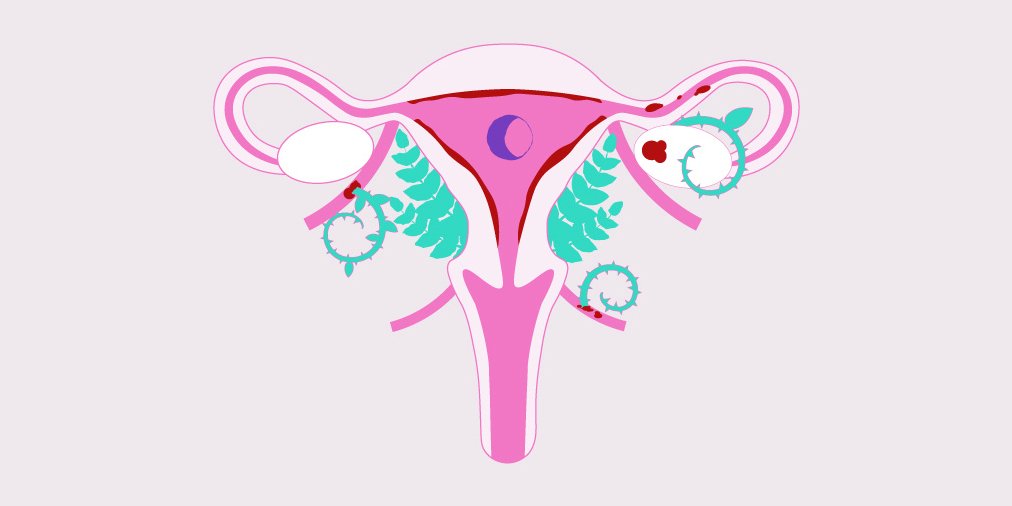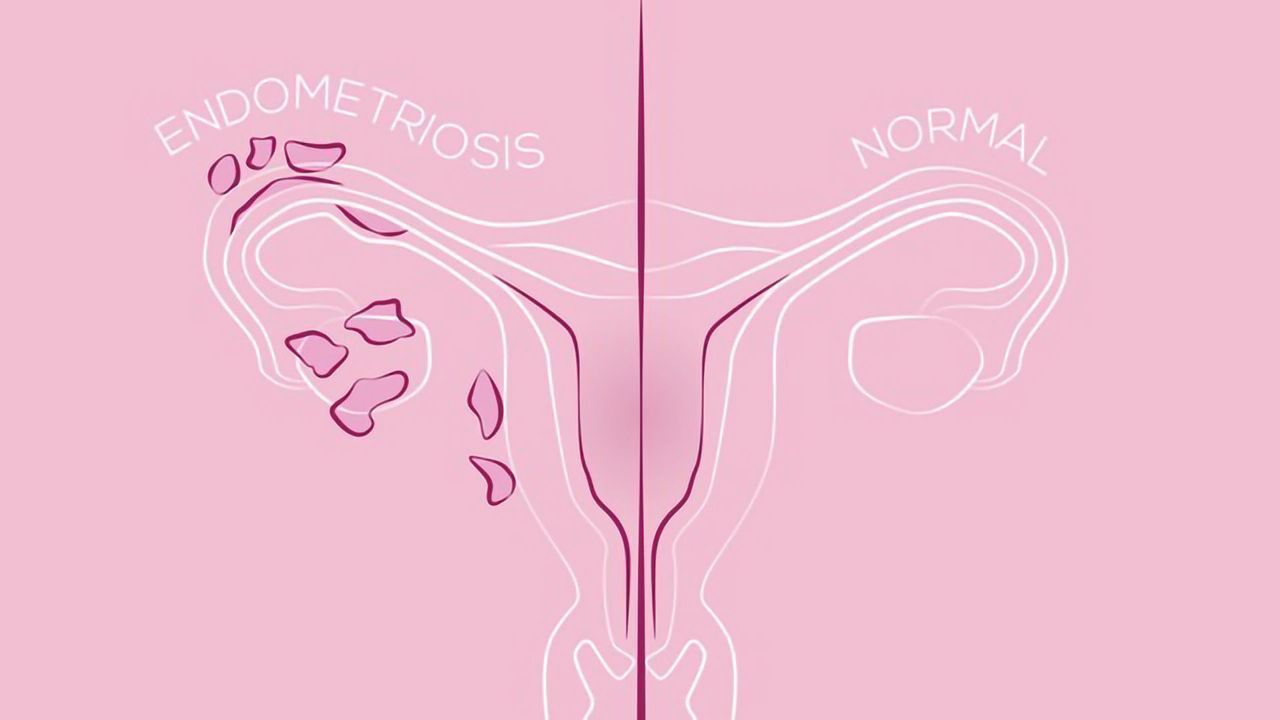Endometriosis is a condition in which the tissue that forms the lining of the uterus starts growing outside it, in areas like the ovaries, abdominal cavity, urinary bladder or pelvis. This severe pain and if the tissues invade into the rectum and bowel, it leads to constipation or diarrhoea. Sometimes the growth also happens in the ovaries or fallopian tubes, causes infertility. Growth within the vagina and rear of the uterus causes pain during sexual intercourse. Endometriosis also leads to inflammation, causing abdominal pain and bloating.
With symptoms like menstrual irregularities, chronic menstrual pain, sexual dysfunction and infertility, the condition can not only affect a person’s physical health, but also compromise their emotional well-being. In India, about 25 million women are affected by Endometriosis. But the lack of awareness around menstrual health and the stigma around such topics prevent timely diagnosis. The symptoms of endometriosis often overlap with the symptoms of other conditions like uterine fibroids, Poly-Cystic Ovarian Syndrome (PCOS), ovarian tumor, and the like.
The symptoms of endometriosis are very often overlooked. People often think that these symptoms are common to menstruation. Moreover, the myths around endometriosis and the patriarchal society’s expectations of menstruators to endure pain and discomfort during menstruation without complaints prevents many of us from seeking proper healthcare.
Endometriosis therefore, is a condition that is shrouded in many misconceptions and myths. It is important to objectively analyse the condition in order to make sure that there is proper awareness as well as information to track symptoms by oneself and seek timely medical help.
The early stages of secondary dysmenorrhea can be managed by over-the-counter painkillers. Hence, many menstruators mistake it for normal period cramps. But if ignored, it deteriorates with time. The delay in the diagnosis of these symptoms often aggravates the condition of endometriosis
Myth 1: Endometriosis only affects the pelvic region
Though the condition most commonly affects organs in the pelvic region, it can involve any region inside the body. The endometrium, when it exists outside the uterus behaves like it normally should. It thickens, breaks down and bleeds with increase in estrogen during every menstrual cycle. But unlike in the uterus, the endometrium here doesn’t have the possibility to exit the body through menstruation. So, as it gets trapped within the body, it irritates and eventually scars its surroundings which can lead to inflammation and adhesions. The most common sites of endometriosis are the ovary and the fallopian tube while the least common site is the Central Nervous System (CNS).
Myth 2: Heavy cramps is a symptom of endometriosis
One of the most common symptoms of endometriosis is secondary dysmenorrhea which is a condition where menstruators who previously did not experience heavy cramps begin having severe pain in their lower abdomen during menstruation. But this pain caused by endometriosis is much more than just period cramps. Since it is an estrogen dependent condition which means that biologically, estrogen aggravates the pathological process of the condition, during menstruation, the endometrium found outside the uterus might get inflamed, causing scarring and pain.
The early stages of secondary dysmenorrhea can be managed by over-the-counter painkillers. Hence, many menstruators mistake it for normal period cramps. But if ignored, it deteriorates with time. The delay in the diagnosis of these symptoms often aggravates the condition of endometriosis.
Also read: Endometriosis: Journey Of Loving Myself, My Body A Little More
The condition when diagnosed can be controlled with medical guidance because a distinct cure for Endometriosis is yet to be arrived at. The treatments for endometriosis generally involve the treatment of its symptoms like secondary dysmenorrhea and infertility. The severe pain is controlled by pain medications and in some cases, surgical treatments. The resultant fertility, on the other hand, is treated with hormone therapy and IVF treatments

Myth 3: Endometriosis is very painful
Although secondary dysmenorrhea is very common that doesn’t imply that the condition is painful for all people. Many menstruators are often diagnosed with endometriosis only when they seek treatment for infertility. Infertility, one of the warning signs of the condition is significantly caused by endometriosis.
In India where it is expected of every married woman to bear a child, there is a lack of conversations around infertility. The association of shame with infertility in our society prevents women from getting tested in order to avoid blame and mortification. This often delays the diagnosis of conditions like endometriosis in women because people are either too scared or prejudiced to consult doctors. Endometriosis often puts pregnant individuals at a higher risk of premature birth. It is also one of the many causes for caesarian deliveries due to placental complications.
Myth 4: Endometriosis is preventable
Though the condition has certain risk factors like obesity, high estrogen exposure and nulliparity or late pregnancy, Endometriosis can develop at any point of time. Changes in lifestyle can control the risk factors but it does not make an individual immune to the condition.
The condition when diagnosed can be controlled with medical guidance because a distinct cure for Endometriosis is yet to be arrived at. The treatments for endometriosis generally involve the treatment of its symptoms like secondary dysmenorrhea and infertility. The severe pain is controlled by pain medications and in some cases, surgical treatments. The resultant fertility, on the other hand, is treated with hormone therapy and IVF treatments.
Endometriosis is manageable if not entirely curable. So, it is very important to monitor the patterns of menstrual experiences and consult a gynecologist whenever there is suspicion of symptoms. A frank conversation around Endometriosis can generate further awareness and save menstruators from being physically and emotionally tormented.
Also read: Endometriosis: An Under-diagnosed, Painful Condition With Lasting Impacts
Featured Image: Technology Networks
About the author(s)
Udhriti Sarkar is a post-graduate student at Calcutta University. When she is not obsessing over fictional characters, she observes people and writes about them





Thanks for writing about endometriosis. I suffer from this though was diagnosed early in my twenties. It’s whole new level of suffering and no light in the end of the tunnel. When I lived in UK there were support groups. Back here in India it’s not even recognised as a problem unless you go to the doctor for infertility treatment. Wish there is more awareness regarding this disease and support groups. Padma Lakshmi the writer and chef has created more awareness regarding this. Wish someone in India do the same.